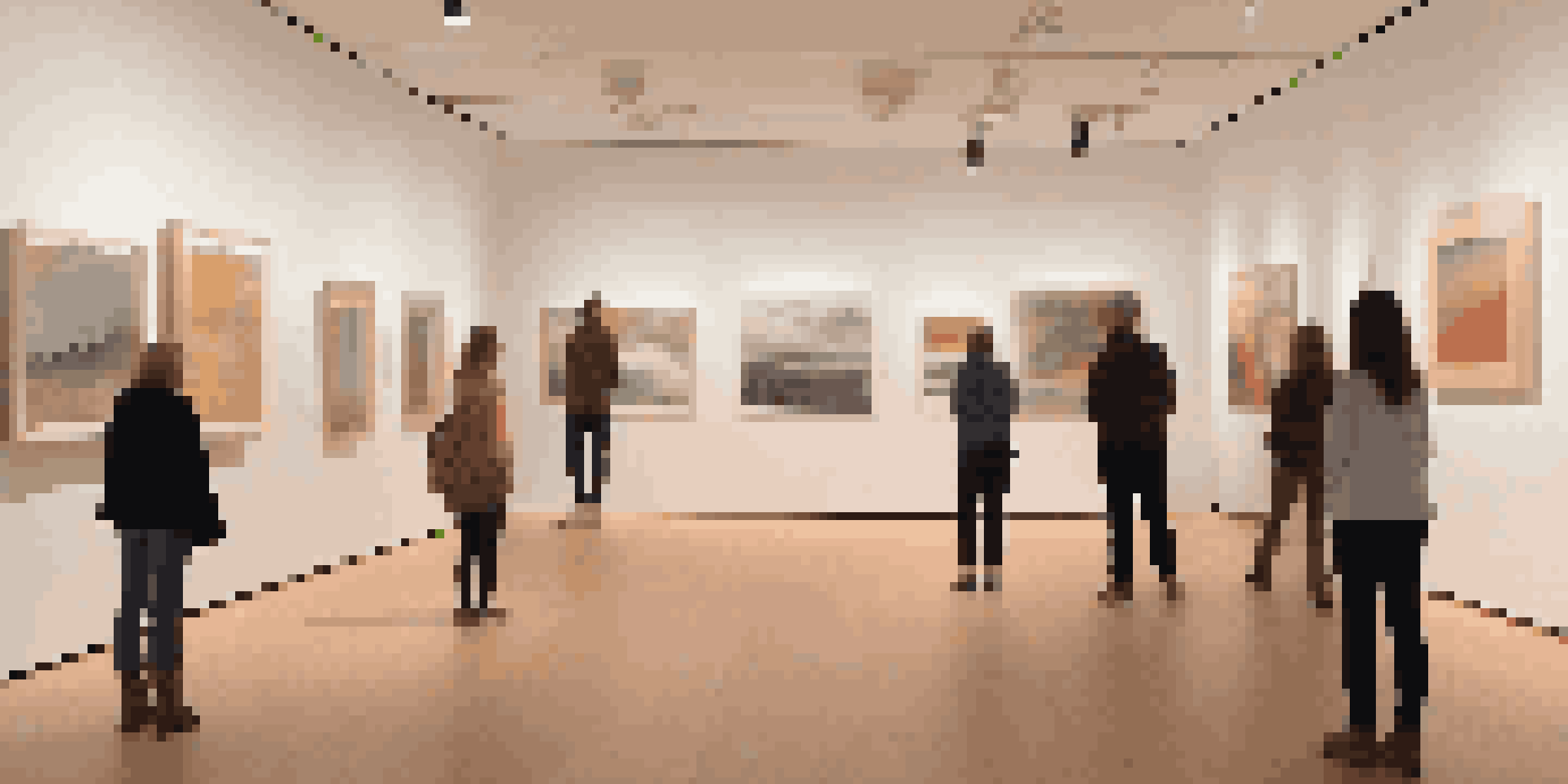The Power of Sound: Transforming Visual Art Experiences

The Interplay of Sound and Visual Art
Sound and visual art have shared a vibrant relationship throughout history. Artists have long recognized how sound can evoke emotions and enhance the visual experience. Just as a movie score heightens the drama of a scene, sound can amplify the impact of visual art, creating a multi-dimensional experience for the audience.
Creating Atmosphere: The Role of Soundscapes
Soundscapes play a crucial role in setting the mood for visual art exhibitions. Imagine walking into a gallery filled with the soft rustle of leaves or the distant sound of waves crashing. These auditory elements can transport viewers to different environments, making them feel more immersed in the artwork.
Sound Enhances Visual Art Experience
The combination of sound and visual art creates a multi-dimensional experience that evokes emotions and deepens viewer engagement.
Engaging Emotions Through Audio-Visual Harmony
The combination of sound and visual art can evoke a spectrum of emotions. For instance, a vibrant painting accompanied by upbeat music can inspire joy, while somber pieces paired with melancholic sounds can resonate with feelings of sadness. This emotional engagement is vital in creating a memorable and impactful art experience.
Case Study: Sound Installations in Art Galleries
Consider the work of artists like Janet Cardiff, who integrates sound into her installations. Her '40-Part Motet' features an arrangement of voices that envelops the viewer, creating a unique auditory experience that complements the visual elements. Such installations showcase how sound can transform traditional art spaces into immersive environments.
Soundscapes Set Mood in Galleries
Auditory elements like soundscapes can transport viewers into different environments, enriching their immersion in the artwork.
The Science Behind Sound and Visual Perception
Research indicates that sound can significantly affect how we perceive visual stimuli. Studies show that certain sounds can enhance the clarity and appreciation of art. This phenomenon highlights the brain's ability to integrate sensory information, making sound an essential component of how we experience visual art.
Interactive Art: Engaging Audiences with Sound
Many contemporary artists now create interactive pieces that respond to sound. These installations invite viewers to become participants rather than passive observers. For example, sound-responsive sculptures can change form or color based on the noises made around them, creating a unique experience for each visitor.
Future Innovations in Art and Sound
Advancements in technology, such as VR and AR, will further integrate sound with visual art, leading to more immersive and interactive experiences.
The Future: Innovations in Sound and Art
As technology continues to advance, the integration of sound in visual art will only grow. Innovations such as virtual reality (VR) and augmented reality (AR) provide exciting opportunities for artists to explore new dimensions of sensory engagement. This future promises a more holistic approach to art, where sound and visuals collide in groundbreaking ways.
Conclusion: The Lasting Impact of Sound in Visual Arts
In sum, the power of sound in enhancing visual art experiences cannot be underestimated. It enriches our understanding and emotional connection to the artwork. As artists and audiences continue to explore this dynamic relationship, we can expect a more immersive and transformative art experience that resonates on multiple levels.